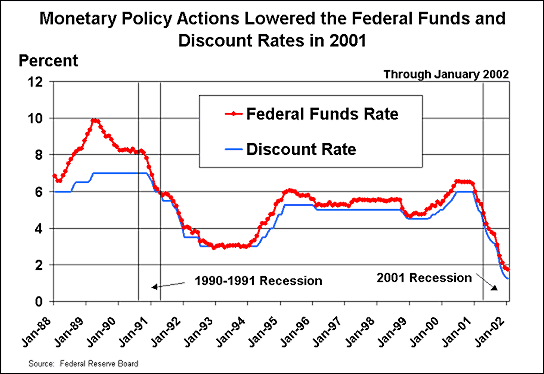
In principle, a decrease in the discount rate encourages banks to borrow, which increases the amount of available reserves held by the banking system, which then induces an increase in the money supply and a decrease in interest rates. The discount rate is the interest rate that Federal Reserve Banks charge when commercial banks borrow reserves. The other two are open market operations and reserve requirements. The discount rate is one of the three monetary policy tools that the Fed can use, in principle, to control the money supply.

The discount rate, which is set by Federal Reserve Banks, subject to approval by the Board of Governors, is used more to signal changes in monetary policy rather than to actually control the money supply. A decrease in the money supply can be achieved when the Fed raises the discount rate. An increase in the money supply can be achieved when the Fed lowers the discount rate. In other words, marginal cost can increase or decrease without inducing a profit-maximizing oligopolistic firm to change price or quantity.ĭISCOUNT RATE: The interest rate charged by the Federal Reserve System (the Fed) for loans to commercial banks, which in principle can be used as a means of a controlling the money supply. Because a profit-maximizing oligopolistic firm equates marginal cost to marginal revenue, marginal cost also can take on a range of values at the existing quantity. The corresponding marginal revenue curve contains a vertical segment at the existing or initial quantity. The kinked demand curve contains two distinct segments, one for higher prices that is more elastic and one for lower prices that is less elastic. KINKED-DEMAND CURVE ANALYSIS: An analysis that seeks to explain rigid oligopolistic prices using the kinked-demand curve. AmosWEB means Economics with a Touch of Whimsy!


 0 kommentar(er)
0 kommentar(er)
